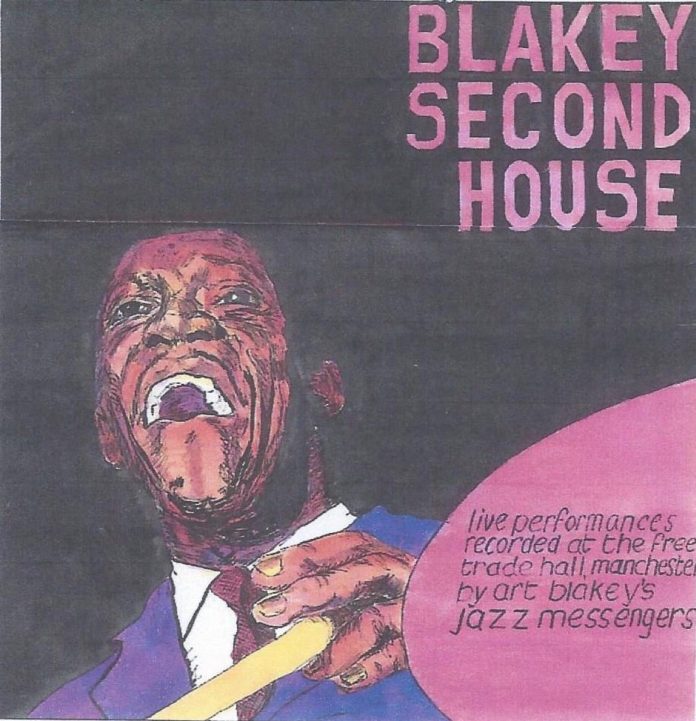British modern jazz fans had been waiting for years to hear Art Blakey’s Jazz Messengers in the flesh. Finally, when Art brought his group to this country in May 1961, in company with that of Thelonious Monk, they got their chance. And they were not disappointed: Blakey’s group was probably the most satisfying American modern jazz group to play on these shores, displaying a typical brand of driving, uncompromising music.
This recording was made at the second house concert at Manchester’s Free Trade Hall, and what it may be lacking in recording perfection is amply compensated for in atmosphere and excitement. The tunes played here are all typical ones associated with the Messengers. Bobby Timmons’s This Here is the tune that sparked off the “soul” movement, and has since had a phenomenal success. Benny Golson’s Blues March is almost a pop tune by now, various versions having made their bid for hit-parade honours. Night In Tunisia here develops into a Blakey “orgy in rhythm”, culminating in a flag-waving climax. Some of the impact of this number is perhaps lost because the way Art and his men play it, it’s exciting to watch as well as hear.
Bass player Jymie Merritt was unknown before he joined the Messengers, but has since proved himself worthy of the faith Blakey has shown in him: he plays in a tasteful, unobtrusive but solid manner. Pianist Bobby Timmons might have been one of the progenitors of soul jazz, with Moanin’ as well as This Here, but his piano style is not obsessively funky in the manner of, say, Les McCann. Timmons is an eclectic; at times his playing is reminiscent of Bud Powell; at others he plays in a lightly swinging, funky style; however, here his playing is highly reminiscent of Red Garland, with rich, florid block chords prevailing as he reaches the climax of each solo.
Like Jymie Merritt, Wayne Shorter is a comparative newcomer to the scene. Apart from a short stint with Maynard Ferguson’s band, he was completely unknown to the jazz public before joining Blakey. Shorter is one of the avant-garde tenor-sax stylists, obviously deeply influenced by John Coltrane. His sour, edgy tone and heated utterances are perhaps at first offensive to the ear, but like a lot of good things, his playing is an acquired taste. Lee Morgan is the guy who was playing trumpet with Dizzy Gillespie’s big band at 18, and is probably the best trumpet player for his age (22) in the world today. Lee was influenced a lot by Dizzy and Clifford Brown, but now has a highly personal style: his fantastic technique is always in evidence, but his solos are full of warmth and humour.
Discography
This Here; Blues March; Night In Tunisia
Art Blakey (d); Lee Morgan (t); Wayne Shorter (ts); Bobby Timmons (p); Jymie Merritt (b). Free Trade Hall, Manchester, 6 May 1961.
Discographical note: A CD was issued in 2012 entitled Art Blakey And The Jazz Messengers At The Free Trade Hall 1961 on Head On Fire 71 but with a different track list.
















